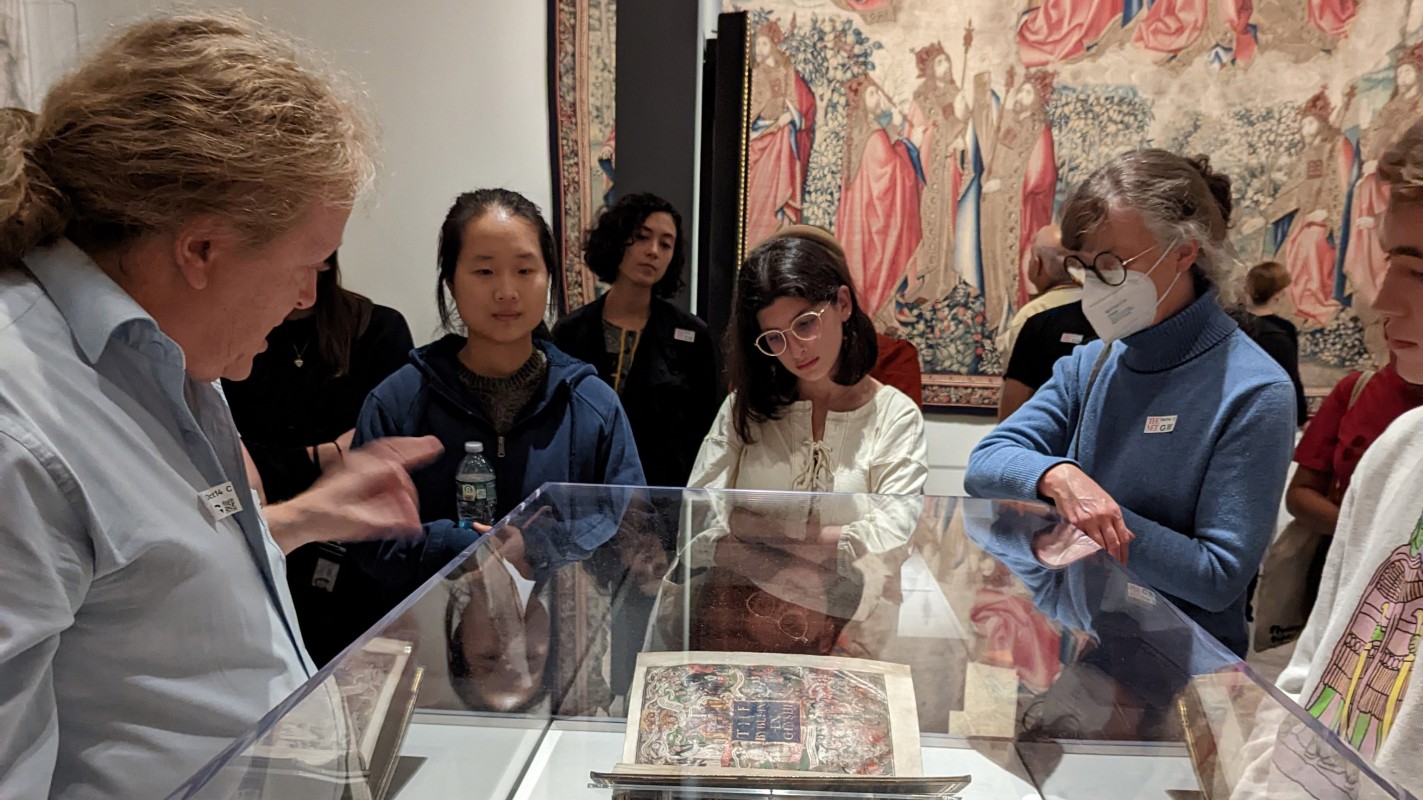Tapestries and grails: CEMERS resumes its annual field trip to the Met

Seeing a piece of art in a glossy illustration or projected on a screen doesn’t have the same feel as being in its physical presence.
“It’s one thing to talk about something in class, but seeing them in person is different — just seeing the brushwork, how the paint was handled and understanding the process behind certain paintings,” said Samantha Ballin, a junior majoring in English and fine arts. “On a slide, you can miss the details, especially if it’s not a good photo of the painting.”
Ballin and nearly 50 other Binghamton University students had the opportunity to deepen their understanding of art and history during the Center for Medieval and Renaissance Studies’ annual field trip to the Metropolitan Museum of Art in New York City. The Oct. 14 trip, which began in the Cloisters and included guided tours, was the first since a two-year hiatus due to the coronavirus pandemic.
Museum installations consist of more than collections of objects; they also allow students to think critically about context, and how the conditions of an object’s display shape our modern perceptions of the past, noted Assistant Professor of Art History Alexis Wang.
The Cloisters’ famous room of unicorn tapestries proved a favorite for students, said Hannah Jones, a doctoral candidate in history and CEMERS’ graduate assistant. Students saw the tapestries’ extensive details up close, from the more than 100 unique plants depicted in intricate stitchery to Christian and bridal symbolism. In another part of the Cloisters, they studied the tomb effigy of a 13th-century French knight, including his unusual sword: likely Chinese in origin, and acquired during his travels as a crusader in the Near East.
“It was really interesting to be able to learn about the art on display there while being immersed inside the kind of monastery that it would have been historically displayed in,” said Hudson Braine, a junior majoring in English with a concentration in creative writing.
This year, the Met proper offered a special treat: a brand-new exhibit on the Tudors, the royal dynasty that ruled England from 1485 to 1603. The emphasis is on the splendor of the Tudor court and the exhibit features a wide array of objects, from opulent tableware to tapestries, jewelry and English-language Bibles.
In his class on British painting, Professor of English, Art History and Theatre Andrew Walkling had lectured on several items that were featured in the Tudor exhibit, Ballin noted. That included the famous “rainbow portrait” of Queen Elizabeth I, along with miniature paintings only a few inches tall; they looked far different in person.
“England was not, as some thought, a cultural backwater; there were a lot of cutting-edge artists coming to England and doing cutting-edge work,” explained Walkling, who led a tour of the exhibit.
In fact, the tour consisted of more than Binghamton students; members of the public also tagged along to learn from Walkling’s expertise.
Classroom slides tend to erase perspective; a four-foot-tall painting appears the same size as a miniature portrait — objects that played different cultural roles in the Tudor court, Walkling observed. While students have the opportunity to work with historical objects in the Binghamton University Art Museum’s collection, they don’t often have the chance to get up close and personal with, say, an ornate sixth-century chalice that was once assumed to be the literal Holy Grail.
That would be the so-called Antioch chalice, an ornate, Byzantine-era gilded cup that one of Wang’s students is studying in class. The student, whose project focuses on the sixth-century gold trade, saw the cup firsthand at the Met, Wang said. Her students are currently working on a mapping assignment, in which they track the movements of an object across space and time, starting from the moment of its production.
“The assignment is meant to help students engage with the interconnectedness of the medieval Mediterranean, and to help them appreciate how meaning and artistic production were shaped by the constant movement of people, objects and ideas,” she said.
“CEMERS is a treasure in that it supports students going on these trips to learn about the past from real objects,” Walkling said.
